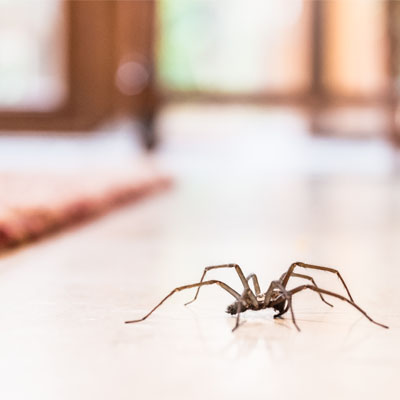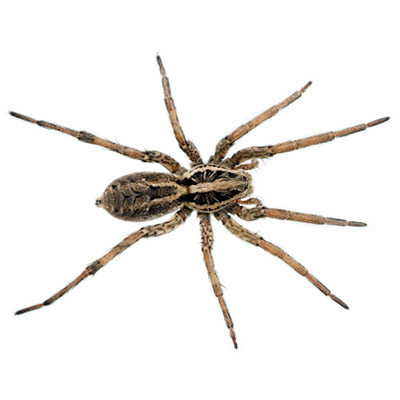When the weather gets cold, spiders have two options for survival:
- Option #1 – Spiders can produce a compound that builds up their tissue and lowers the rate and temperature at which they freeze. This aids in outdoor winter survival.
- Option #2 – This one is preferable to the spider, and much less preferable for us… And that is to seek shelter, food, and warmth. And where is the perfect place they can find all these things? Inside your home.
Thankfully, you can be ready. Here are 4 common house spiders you might see this winter, and how you can identify, and prevent them from coming back.
American House Spider (Parasteatoda tepidariorum)
Despite its name, this is one of the most common house spiders in the entire world. They are commonly found in basements, sheds, and garages, as they prefer to hide in dark places with plenty of cover. They aren’t dangerous to humans but they can bite if they feel threatened. Thankfully, the bites aren’t venomous (but they will sting!)
You can identify these spiders by their bulbous figure, along with black and/or white spots and lines. They spin cobwebs that look similar to what you’d see as a Halloween decoration. The best way to prevent these spiders from living in your home is to limit potential hiding spaces, and deep clean any infested areas (vacuum, soap, and water).
Daddy Long Legs (Pholcus phalangioides)
These spiders look to make their habitat where it is dark, and damp. Basements, bathrooms, and under cabinets are common areas. Contrary to some myths, these spiders are not venomous and generally try to avoid contact with humans.
They are one of the easiest spiders to identify, as their legs are usually 5-6 times the length of their body. The best way to prevent these spiders is to make sure there is no unnecessary moisture anywhere inside or outside your home. Also make sure there is no loose trash, debris, or wood as these things attract daddy long legs (and other critters too).
Brown Recluse Spider (Loxosceles reclusa)
These spiders are extremely shy and do everything they can to avoid human contact. They prefer to nest in dry, secluded areas where there is plenty of cover.
The Brown Recluse spider is brown, and can be easily identified by what looks like a violin on their back. They are venomous but will only bite if necessary. The best way to prevent these spiders is to hire a professional pest control company. However, eliminating favorable living conditions will help.
Wolf Spider (Lycosidae)
The wolf spider will be one of the biggest ones you see in your home. They are usually brown, and sometimes have black/gray coatings. Their eyes best identify them, as they have a bottom row of 4 small eyes, with 2 bigger eyes above, and the 2 biggest eyes on top of their head. They are most likely to be seen near doors and windows.
The wolf spider is venomous, but not dangerous to humans. The most effective way to prevent wolf spiders is to make sure all cracks in your windows and doors are sealed. Glue traps may also be effective.
At Pest Control Unlimited, we understand these spiders and their desire to make your home, their home. That’s why we developed our winter pest control treatments to ensure these pests stay where they belong… OUTSIDE. Give us a call today at 888-649-9919 and let our trained professionals help you!

